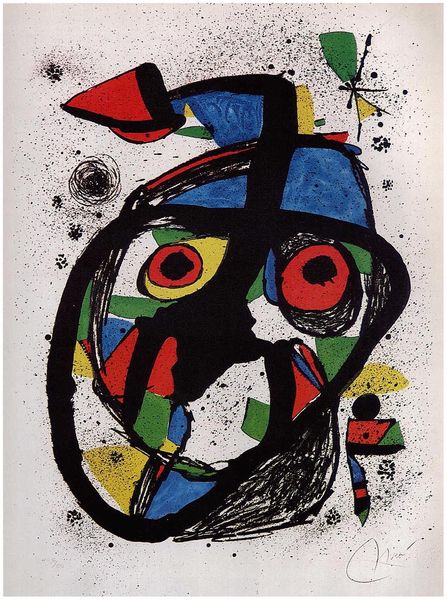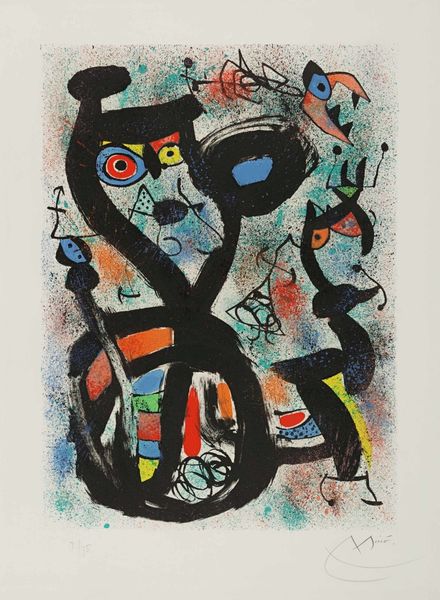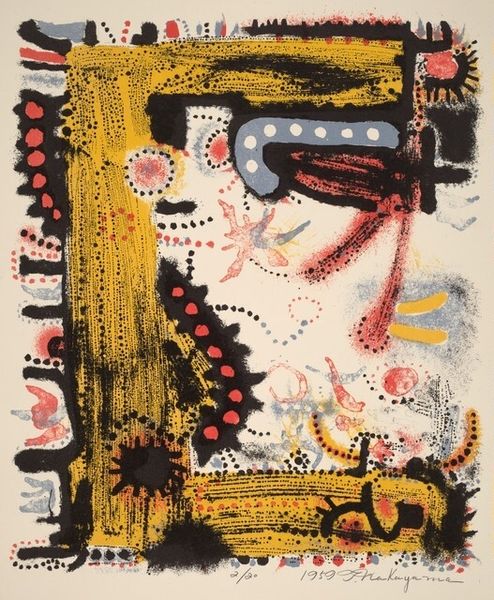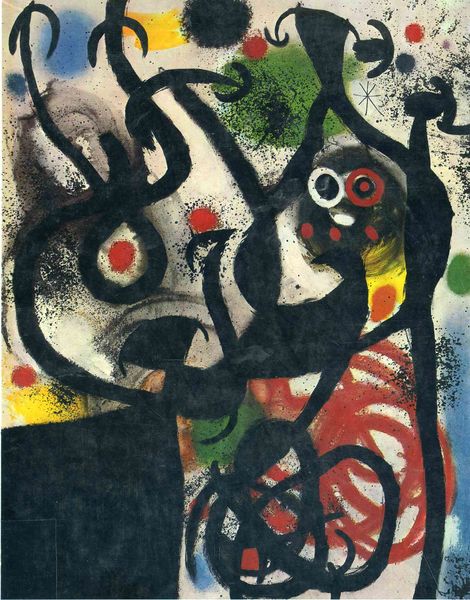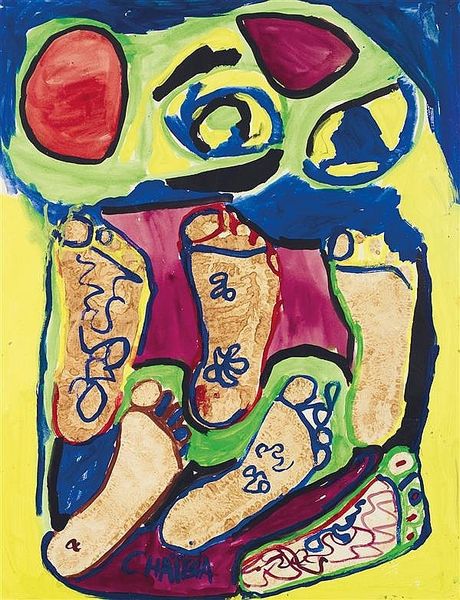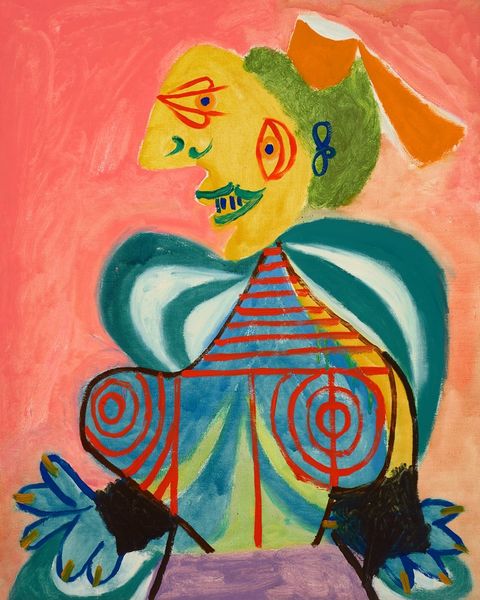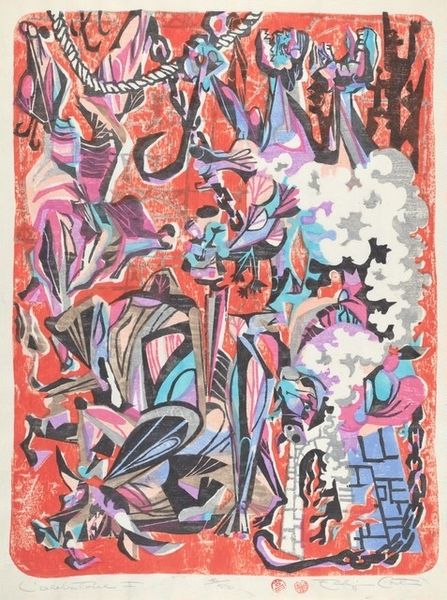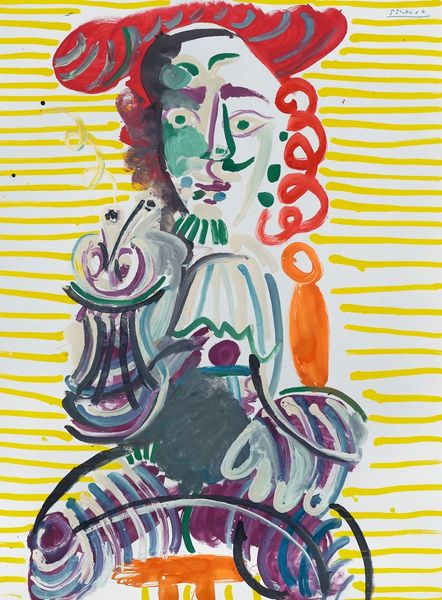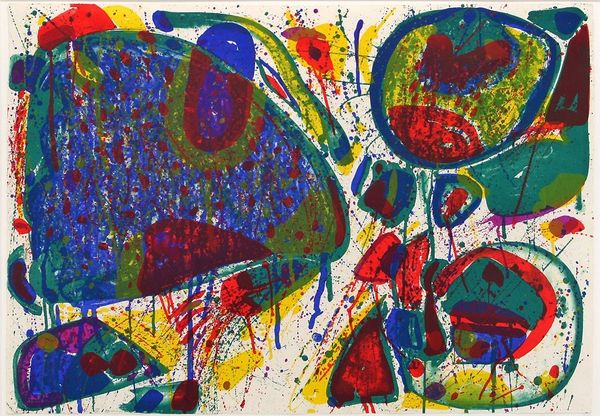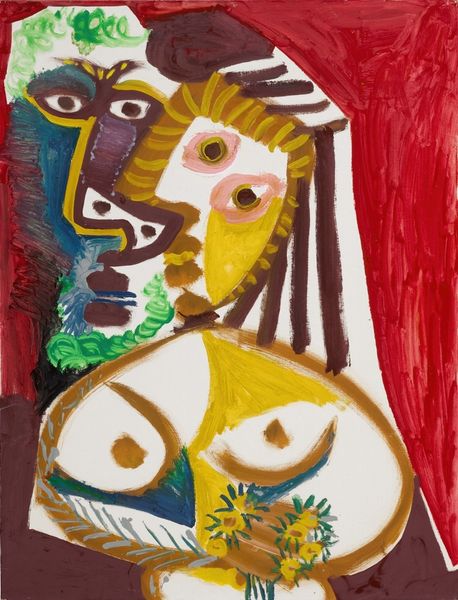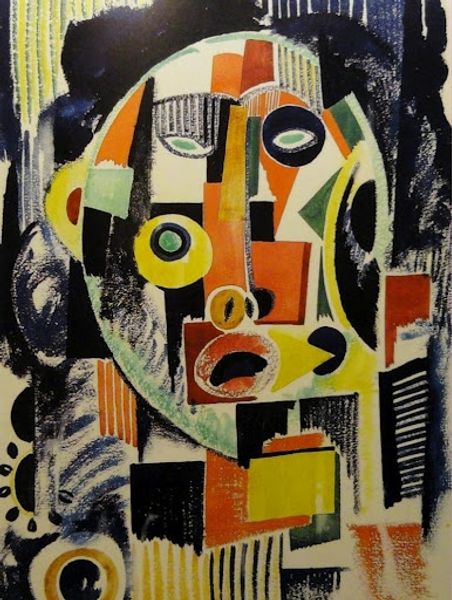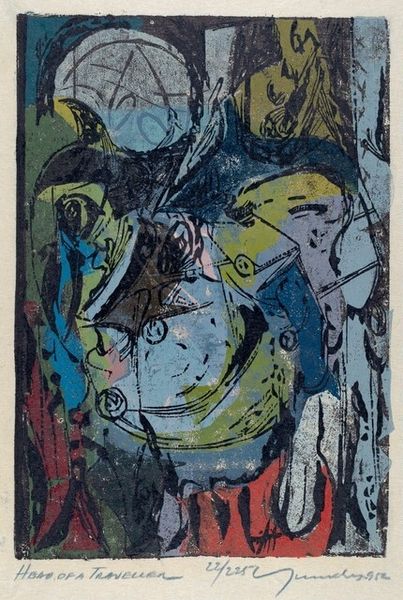
Copyright: Public Domain: Artvee
Curator: Picasso’s "Buste d’homme," painted in 1968, confronts us with its fractured portrait. Painted using oil paint. The use of figuration within abstraction is definitely intriguing here. Editor: Well, that's certainly...vibrant. Almost aggressively so, with those stark contrasts. I'm struck by how heavily the paint has been applied in some areas. You can really see the gestures, the build-up of layers, like a raw, immediate process. Curator: Indeed, look how the cubist fragmentation dislocates familiar features, creating new symbolic relationships. The single prominent eye, the disjointed mouth – do they suggest a distortion of power, or a breaking down of conventional masculinity? Editor: I see that fragmentation less as symbolic and more as…visceral. Consider the oil paint itself; its thickness, the speed of application—it embodies the urgency of its making. What materials did he have to hand and what was the atmosphere like in the studio at this time. Curator: That speed is what grants it energy, isn't it? Picasso here returns to symbolism, in the midst of expressionism - there's an immediate continuity in his images with past memories and signs of cultural and personal significance. Editor: Continuity maybe, but what were the costs? It’s difficult to ignore that access to material, the labour… These things contribute just as much to the meaning as any inherited symbolism. I would be interested in how quickly Picasso went through these materials and where he had access to the source of his art materials from. Curator: Well it depends on what is prioritized, the consumption or artistic impact, right? How might later audiences process these signifiers based on different understandings of art history, or even gender? The bust here almost resembles the form of an abstracted king of sorts. Editor: And yet we, the viewers, engage with these layers on different grounds depending on context. Not all cultural significance is inherently carried within symbols - sometimes it is shaped simply through materiality. It is a two-way encounter for the art as well. Curator: I like how you note this push and pull in the material; however, for me it lies mostly within how those raw materials are imbued with the capacity to resonate with history. Thanks for adding new layers here. Editor: Absolutely! It is by delving into materials that we unveil further art, and that helps broaden our understanding beyond conventional narratives.
Comments
No comments
Be the first to comment and join the conversation on the ultimate creative platform.
